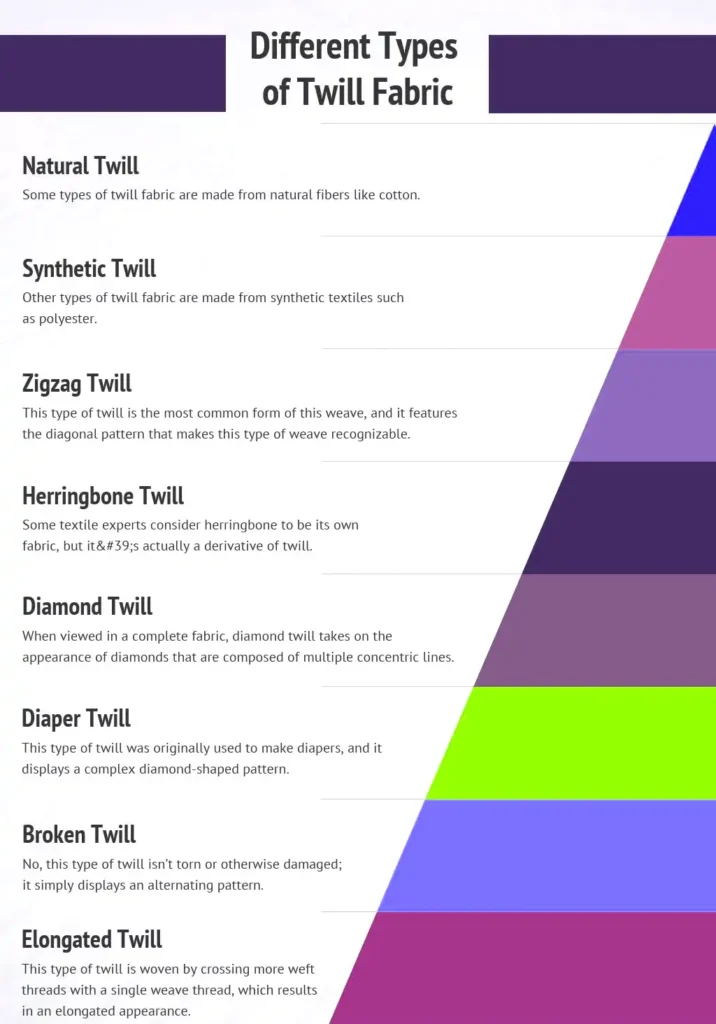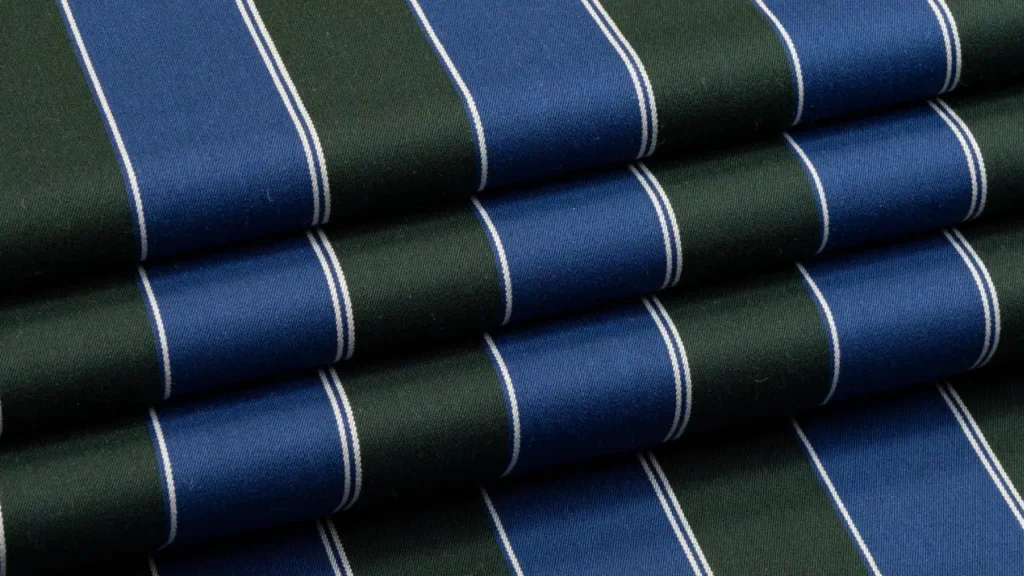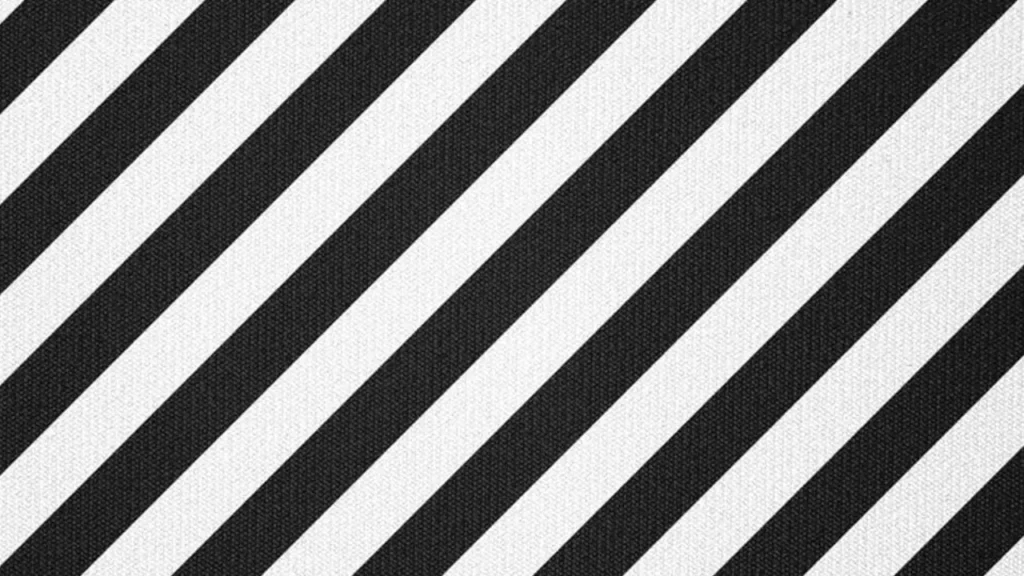Twill fabric, with its distinctive diagonal weave, has been a staple in the textile industry for centuries. Its versatility and durability have made it a popular choice for a wide range of applications, from everyday clothing to high-performance sportswear.
In this blog post, we’ll delve into the world of twill fabric, exploring its unique characteristics, diverse applications, and the captivating visual appeal of its diagonal lines.
Whether you’re a fashion enthusiast, a textile aficionado, or simply curious about the fabric that’s woven into our lives, this post will provide you with valuable insights and inspiration.
Let’s unravel the beauty and functionality of twill fabric together.
Twill Fabric With Diagonal Lines
Twill fabric is a versatile and durable textile known for its distinctive diagonal lines, or wales. This unique weave pattern is created by a specific weaving technique where the weft yarns pass over and under two or more warp yarns in a staggered pattern.
Key Characteristics of Twill Fabric:
- Diagonal Lines: The most recognizable feature of twill is its prominent diagonal lines, which can vary in prominence depending on the weave structure.
- Durability: The tight weave and overlapping yarns make twill highly resistant to wear and tear, making it ideal for clothing and upholstery.
- Drapability: Twill fabric drapes well, making it suitable for garments that require a smooth, flowing fit.
- Texture: The diagonal lines create a subtle texture that adds visual interest to the fabric.
- Versatility: Twill can be made from various fibers, including cotton, wool, silk, and synthetic blends, offering a wide range of weights, textures, and finishes.
Types of Twill Fabric

Here are some of the most common types of twill fabric:
Even-sided Twills:
- Foulard or Surah: A lightweight, soft twill with a subtle diagonal pattern, often used for scarves and blouses.
- Herringbone: A distinctive zigzag pattern created by alternating the direction of the diagonal lines, commonly used for jackets and coats.
- Houndstooth: A complex pattern of broken checks, often used for formal wear and accessories.
- Serge: A heavy, durable twill with a pronounced diagonal line, often used for workwear and outerwear.
- Sharkskin: A fine, smooth twill with a subtle diagonal pattern, often used for suits and dress pants.
- Twill Flannel: A soft, warm twill with a brushed finish, often used for shirts and pajamas.
Warp-faced Twills:
- Cavalry Twill: A strong, durable twill with a steep diagonal line, often used for military uniforms and workwear.
- Chino: A lightweight, cotton twill with a soft hand, often used for casual pants and shorts.
- Covert: A heavy, durable twill with a napped surface, often used for outdoor clothing and hunting jackets.
- Denim: A heavy, durable twill with a distinctive blue color, most commonly used for jeans.
- Drill: A strong, durable twill with a coarse texture, often used for workwear and uniforms.
- Fancy Twill: A twill with a complex pattern, often used for decorative fabrics and upholstery.
- Gabardine: A fine, smooth twill with a steep diagonal line, often used for suits and coats.
- Lining Twill: A lightweight, smooth twill used for lining garments.
Other Types of Twill Fabric:
- Sateen Twill: A smooth, lustrous twill with a subtle diagonal pattern, often used for dress shirts and blouses.
- Zigzag Twill: A twill with a pronounced zigzag pattern, often used for decorative fabrics and upholstery.
- Broken Twill: A twill with an interrupted diagonal line, often used for decorative fabrics and upholstery.
These are just a few of the many types of twill fabric available. The type of twill you choose will depend on the specific properties you need, such as weight, durability, and appearance.
Applications of Twill Fabric:
- Clothing: Jeans, trousers, shirts, jackets, and workwear.
- Home Furnishings: Upholstery, curtains, and bedding.
- Industrial Uses: Straps, belts, and technical textiles.
Choosing the Right Twill Fabric:
When selecting twill fabric, consider the following factors:
- Fiber Content: Choose a fiber that suits your needs, such as cotton for breathability, wool for warmth, or synthetic blends for durability and performance.
- Weight: The weight of the fabric will determine its drape and suitability for different applications.
- Weave Structure: The tightness of the weave will affect the fabric’s durability and texture.
- Finish: The finish can influence the fabric’s appearance, feel, and performance.
By understanding the characteristics and applications of twill fabric, you can make informed choices when selecting this versatile and stylish textile for your projects.
Twill Fabric With Diagonal Lines Crossword Clue

Twill fabric is a type of woven fabric that is characterized by its distinctive diagonal lines, or wales. This unique pattern is created by a specific weaving technique where the weft yarns pass over and under two or more warp yarns in a staggered pattern.
The diagonal lines in twill fabric create some interesting properties:
- Durability: The tight weave and overlapping yarns make twill highly resistant to wear and tear, making it ideal for clothing and upholstery.
- Drapability: Twill fabric drapes well, making it suitable for garments that require a smooth, flowing fit.
- Texture: The diagonal lines create a subtle texture that adds visual interest to the fabric.
- Hiding Power: The diagonal lines help to hide dirt and stains, making twill a practical choice for everyday wear.
Twill fabric is a versatile material made from various fibers, including cotton, wool, silk, and synthetic blends. This versatility allows twill to be used in various applications, from everyday clothing to high-performance sportswear.
Here are some of the most common types of twill fabric:
- 2×2 Twill: The most common type, with a gentle diagonal line.
- 3×1 Twill: A heavier, more pronounced diagonal line.
- 4×1 Twill: A very steep diagonal line, often used for denim.
- Sateen Twill: A smooth, lustrous twill with a subtle diagonal pattern.
Applications of Twill Fabric:
- Clothing: Jeans, trousers, shirts, jackets, and workwear.
- Home Furnishings: Upholstery, curtains, and bedding.
- Industrial Uses: Straps, belts, and technical textiles.
Choosing the Right Twill Fabric:
When selecting twill fabric, consider the following factors:
- Fiber Content: Choose a fiber that suits your needs, such as cotton for breathability, wool for warmth, or synthetic blends for durability and performance.
- Weight: The weight of the fabric will determine its drape and suitability for different applications.
- Weave Structure: The tightness of the weave will affect the fabric’s durability and texture.
- Finish: The finish can influence the fabric’s appearance, feel, and performance.
By understanding the characteristics and applications of twill fabric, you can make informed choices when selecting this versatile and stylish textile for your projects.
What Are Diagonal Lines

Diagonal lines on fabric, often referred to as wales, are a result of a specific weaving technique called twill. This technique involves interlacing the warp and weft yarns in a staggered pattern, creating a distinct diagonal ridge or line on the fabric’s surface.
Key characteristics of diagonal lines in twill fabric:
- Visual Appeal: The diagonal lines add a unique texture and visual interest to the fabric.
- Durability: The tight weave and overlapping yarns contribute to the fabric’s strength and durability.
- Drapability: Twill fabric drapes well, making it suitable for various garments and home furnishings.
- Hiding Power: The diagonal lines help to camouflage dirt and stains, making the fabric more practical.
Conclusion
Twill fabric, with its distinctive diagonal lines, has stood the test of time, captivating designers and consumers alike. Its versatility, durability, and aesthetic appeal make it a timeless choice for a wide range of applications.
From classic denim to contemporary fashion, twill continues to evolve and inspire. As you explore the world of twill, remember its rich history and endless possibilities.
Elevate Your Designs with Premium Twill Fabric
Are you ready to incorporate the elegance and durability of twill fabric into your next project? Fanda offers a wide range of high-quality twill fabrics with stunning diagonal lines.
Contact us today to discuss your specific needs and receive a personalized quote.
Let’s create something extraordinary together.
